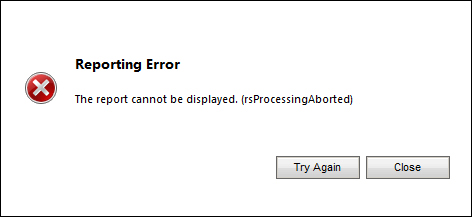Dynamics CRM uses its own authentication method that can be either of the following:
Windows authentication
Claims-based authentication
Office 365 for CRM online
Once the user is authenticated on CRM, we don't want to request authentication again to run a report that is running on a separate server; that is why the CRM Reporting extensions need to be installed. What happens is that the CRM needs to authenticate the user against SQL Reporting Service in order to allow report execution. This process is also called a double-hop authentication. If this is not properly configured, we might receive an error, The report cannot be displayed. (rsProcessingAborted), as shown in the following screenshot:

Sometimes, we might also get an error such as The report cannot be displayed. (rsInvalidDataSourceReference). If this happens, we need to be sure that our report is pointing to the right data source. When developing reports with Visual Studio (or with Report Builder...



